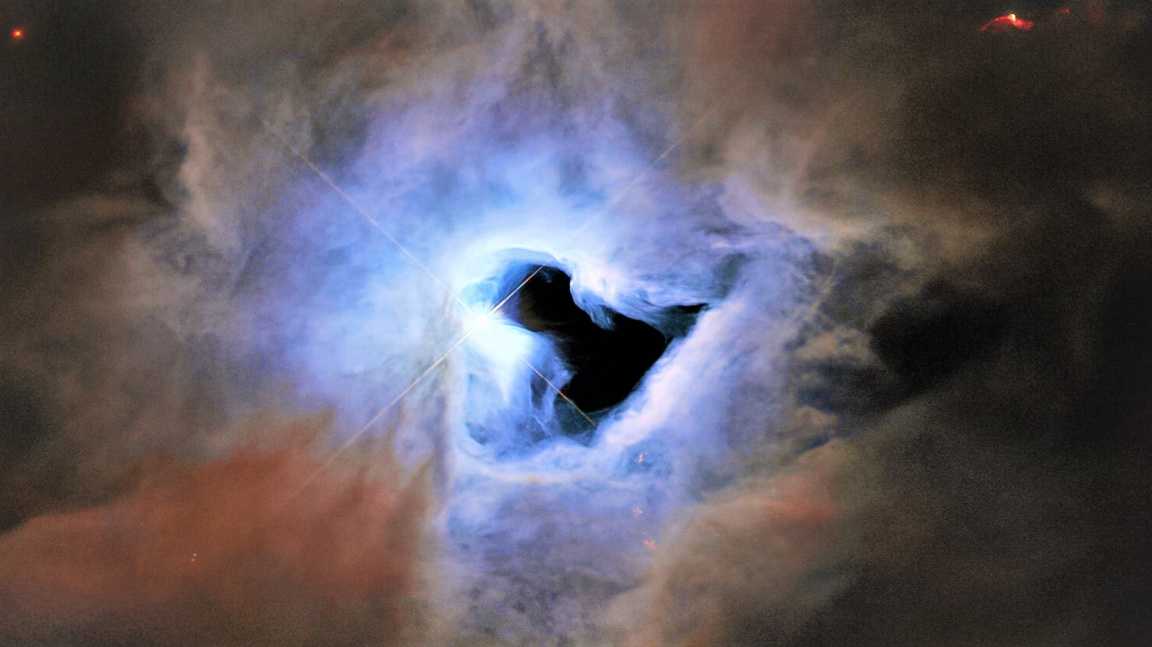The void of space is both breathtaking and terrifying.
The Hubble Space Telescope – a veteran who has been exploring the stars and galaxies around us from Earth’s orbit for more than 30 years – has given us the ultimate glimpse into a spooky cosmic object that astroscientists call the “cosmic keyhole.” “.
It is located 1350 light years from our planet into the reflection nebula NGC 1999, two degrees south of the Orion Nebula, where stars are born. The region is filled with young energy stars with jets that eject surrounding material at speeds of hundreds of kilometers per second. This creates radiant shock waves.
What created the mysterious nothing?
The eerie open space in the middle of the nebula, resembling a keyhole, is an empty part of the universe.
Full image of the Keyhole Nebula. | source:
Profimedia
Astronomers initially thought it might be “Globulo di Bova” – a dense, cold cloud of gas, molecules and dust blocking the background.
However, subsequent observations using different telescopes revealed that the dark spot is actually an empty region of space, nothingness. The origin of this crack in the heart of NGC 1999 remains unknown to this day.
The icing on the Hubble cake
Around it, in the image, we see clouds of dust that reflect the light of the star V380 Orionis, visible near the center of the keyhole. It looks like the light of a street lamp in the fog.
If we were shooting a science fiction movie, the keyholes in the nebula would probably be the perfect place for aliens to enter space near us, or for us to fly to the edge of space.
European space agency ESA on its website remember that the Hubble telescope mission is not just such beautiful images that are the icing on the cake. Above all, the telescope helps scientists to deepen their knowledge of the universe, both by discovering asteroids and, for example, by predicting the life of the Sun.


